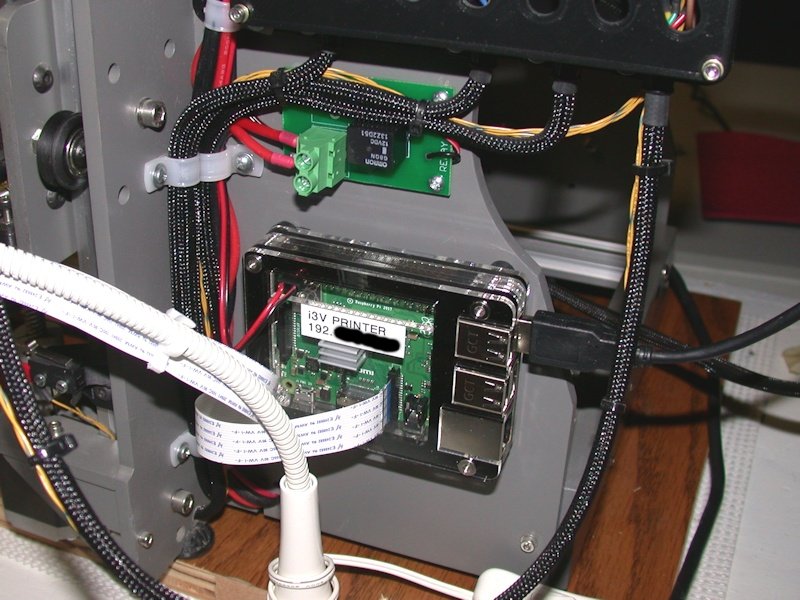Results 1 to 10 of 255
Hybrid View
-
02-02-2019, 12:37 PM #1
RASPBERRY PI AND OCTOPRINT
I've relegated the i3v to our unfinished basement, and opted to install a Raspberry Pi with Octoprint so I could control & monitor the printer from upstairs. The pi was mounted to the area I specifically left for it when I mounted the Smoothiboard case high-up on the right sidewall of the printer.

The Raspberry Pi 3B+ is loaded with Octopi and controlled either through the Octoprint web interface or through the Printoid app. In addition to controlling or monitoring the printer remotely, this also seems to have resolved the periodic issue I've always had with prints locking up when printing from Simplify3D connected to the printer via USB. Simplify3D continues to be declared incompatible by the smoothie developers because it isn't an open source product, so they could care less about the people reporting the lockup issues.
I wanted a small and basic camera to use with Octoprint, so I went with the Raspberry Pi camera module mounted to an IKEA Jansjo gooseneck LED lamp. The pivot clamp and the cable clips are available on Thingiverse at Raspberry Pi Camera System for IKEA Jansjo LED Lamp.

Adding the Raspberry Pi opened up questions on how I'd power the Raspberry Pi and the overall printer. After evaluating various options, I opted to power the Raspberry Pi from the 5V regulator I populated on the Smoothieboard for use with the LCD panel. With only the camera as a peripheral on the Pi, that 5V regulator should be able to handle the Pi 5V load as well. I added the original MakerFarm 30A relay in the dedicated wiring the Smoothieboard gets for the larger MOSFETs used for heater control. The relay is controlled through M80/M81 gcodes that I now add to my slicer output, and Smoothieware is configured to turn off the relay if it detects a temperature runaway condition or other fault.
AC power is controlled through Wink and a compatible smart plug that I already had. I realize there is a TP-Link compatible Octoprint plug-in that can be used for this, but for now I'm just using our existing Wink system.
In a nutshell, when AC power is turned on, the Smoothieboard logic, the Raspberry Pi, and the printer motors and fans all have power available to them. The heaters won't work until the additional relay is turned on.







 Reply With Quote
Reply With Quote




Ender 3 Neo - Jam Problem
05-08-2024, 03:06 PM in Tips, Tricks and Tech Help